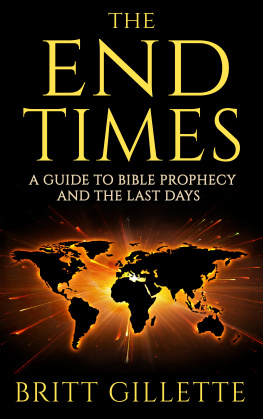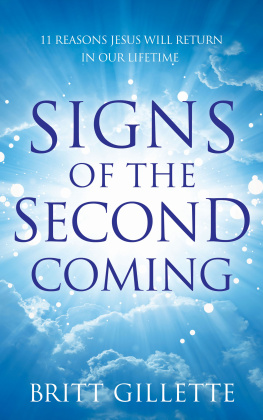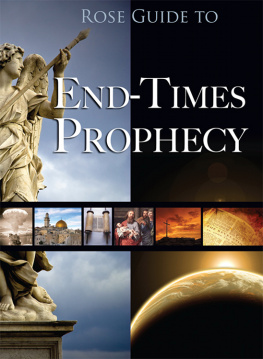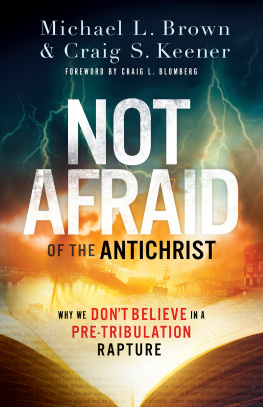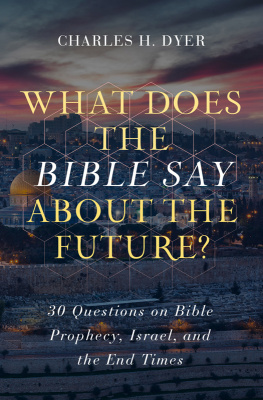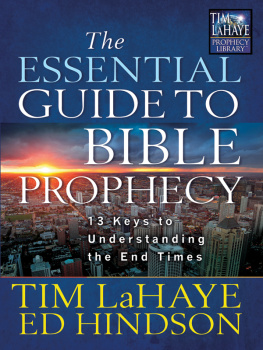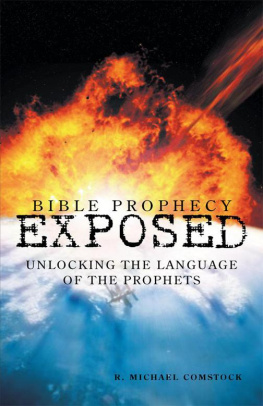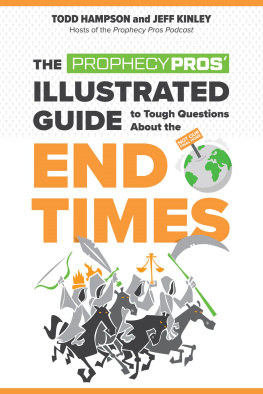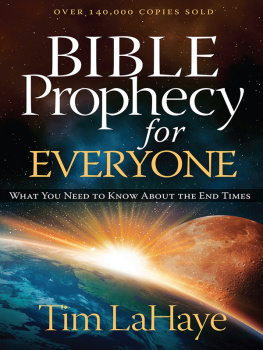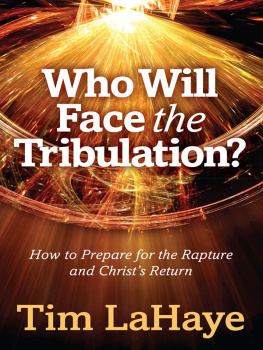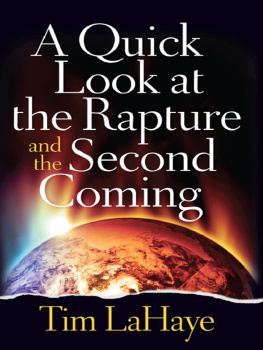Contents
THE END TIMES
A Guide to Bible Prophecy and the Last Days
Britt Gillette
Free Download
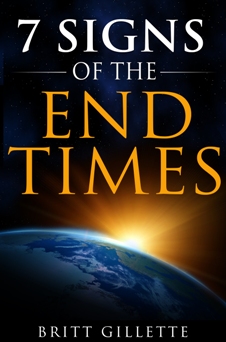
Sign up for my monthly newsletter and get the book 7 Signs of the End Times for free.
Click here to get your free book
DEDICATION
To Mom.
CHAPTER 1
Introduction
DID YOU KNOW one man saved three billion people?
It was October 1962 the height of the Cuban Missile Crisis. U.S. spy planes discovered secret Soviet nuclear missile installations on the island of Cuba. President Kennedy demanded their removal, and the showdown that followed threatened to trigger a global nuclear war. To stop the Soviets from shipping nuclear weapons to the tiny Caribbean nation, Kennedy ordered a naval blockade. For several days, the world held its breath. Would Soviet ships run the blockade? Would they consider it an act of war? No one knew.
Meanwhile, as Kennedy and Khrushchev stared each other down, a Soviet sub was under siege. In the waters around Cuba, a U.S. convoy detected the diesel-powered, nuclear-armed Soviet submarine B-59 and tried to make it surface. Only one problem. The crew of the B-59 didnt know that. As depth charges exploded all around them, they thought they were under attack. To make matters worse, power ran low. The air conditioning failed. Temperatures exceeded 100 degrees, and dangerously high levels of carbon dioxide filled the submarine. Even worse, the crew lost all contact with Moscow. With no outside communication, the subs officers had no idea what was happening. Was this a real attack? Had war already broken out? Should they surface and risk enemy capture? Or should they launch a nuclear strike in retaliation?
Cut off from Moscow, the subs captain feared war had already broken out. He ordered a nuclear strike. Fortunately, the decision wasnt his alone. Launching a nuclear torpedo required approval from three officers the captain, the political officer, and the subs second-in-command. The political officer agreed with the captain. That left the decision in the hands of the third officer, Vasili Arkhipov (who also happened to be the flotilla commander).
The situation was dire. The B-59 s extreme heat and low fuel demanded a quick decision. The three officers argued while Arkhipov held the fate of the world in his hands. At his word, the B-59 would unleash a nuclear strike on the U.S. Navy. And then? Total nuclear war. Cuba, the United States, the Soviet Union, and the whole world would be destroyed. Three billion people would die. Only one mans decision stood between life and death for all mankind. In a moment unknown to much of the world for decades, Arkhipov showed remarkable courage and wisdom. He said no to the launch. His decision saved three billion people.
The B-59 incident may well be the closest the world has ever come to complete annihilation. But you know what? It wasnt the only time. During the Cold War, such close calls were common.
For example, on November 9, 1979, a false alarm at the North American Aerospace Defense Command (NORAD) almost triggered a global nuclear war. That day, command center systems lit up with warnings of a Soviet missile launch. They showed a barrage of missiles heading for America. The U.S. prepared for a counterattack. But the attack wasnt real. A training program designed to simulate Soviet missiles caused a false alarm. In other words, a computer glitch almost set off World War III. Over the next year, hardware failures at NORAD led to three more false alarms.
In case youre wondering, Soviet systems didnt fare much better. In September 1983, the Soviet Union detected the launch of five nuclear missiles from North America. Like the NORAD false alarm, this attack wasnt real either. A Soviet satellite confused sunlight reflecting off a cloud with a real missile launch. Assuming the U.S. wouldnt start a nuclear war with just five missiles, Lt. Col. Stanislav Petrov made a bold gamble. He ignored the alert, betting it was a false alarm, and he too saved the world from nuclear holocaust.
As if all those instances werent enough, the world once again came to the brink of nuclear war just two months later. In November 1983, NATO forces ran a European training exercise code-named Able Archer. The exercise simulated NATOs response to a Soviet attack on western Europe. NATO tried to make it as realistic as possible. The U.S. airlifted thousands of troops, moved command posts to new locations, and changed its alert status to DEFCON 1. Unfortunately, this made the exercise too realistic. It was so realistic, the Soviet Union feared it was an actual attack. While they knew NATO regularly held training exercises, the unusual nature of Able Archer made them believe it was cover for a real attack. The Soviets prepared to counterattack. Nuclear bombers in Germany and Poland prepared to strike. But when Able Archer ended, the Soviet Union stood down. Only later did the U.S. and NATO realize how close they had come to triggering nuclear war.
A World of Unending Threats
Its humbling to study world history since 1945 and realize how close weve come to total annihilation. For years, school children ran war drills and ducked underneath desks. People built bomb shelters in their backyards, and fear of nuclear war haunted world leaders.
Today, the Cold War nuclear threat is gone, but threats to humanity have only multiplied. All you need to do is scan the daily headlines, and youll encounter one reason after another as to why the world is coming to an end. A renewed Cold War The spread of nuclear weapons War in the Middle East Terrorism Biological and chemical warfare Global warming Ebola A nuclear armed Iran Drug resistant superbugs The threats seem never ending.
Consider just one of those modern day threats a global pandemic. Could a contagious disease kill a billion people? Yes. History is filled with stories of plagues that kill on a mass scale. The 14th Century Black Plague is probably the best known example. But weve had others. For instance, one hundred years ago, the world struggled against a relentless enemy H1N1, also known as the Spanish Flu. Rising from the trenches of World War I, it spread to every corner of the globe in 1918 and 1919 even remote Pacific islands. What made it especially deadly is more than half its victims were healthy adults between the ages of 20 and 40. The virus turned their healthy immune systems against them. They died terrible, gruesome deaths. And when the global pandemic finally came to an end, it had taken more lives than the Great War itself. H1N1 killed an estimated 50 to 100 million people approximately 3% to 6% of the worlds population. Today, if a disease killed 3% of the world population, it would leave 230 million people dead. Thats almost the entire population of Indonesia the fourth most populous nation in the world.
Fortunately, weve avoided a similar outbreak in the years since. Weve faced scares from bird flu, swine flu, Ebola, and other diseases, but weve avoided a global pandemic. Some of this is because of what weve done. We have better knowledge of how viruses and bacteria spread. We know how to quarantine areas, disinfect treatment centers, and provide more effective medical care. Yet the number one reason weve avoided a global plague is luck. Thats right. Since 1918, weve been just plain lucky. But unless we develop a cure for infectious disease, our luck will soon run out.
Need another example? Consider the threat of an electro-magnetic pulse (EMP). An EMP is a rapid, invisible burst of electromagnetic energy. Some believe an EMP attack on the United States could fry all of our electronics. In a matter of seconds, it could send a surge of energy through our power grid and electronic devices. The overload from this surge of energy could disrupt or destroy almost anything electronic. This means computers, phones, and cars will stop working. The local power grid? Gone. The local sewage and water treatment plant? A grinding halt. Your smart phone? Wont work. In a society reliant on modern technology, how long until law and order break down? How long before food supplies dwindle and mobs take to the streets? It wont take long at all.

